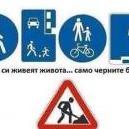Animated map shows how Indo-European languages may have evolved
-
Теми
-
Мемове, свързани с руско-украинската война през 2022 година 1 2 3 4 16
От nik1, in Руско-украинската война 2022 година.
- 386 мнения
- 26137 views
-
- 2257 мнения
- 105427 views
-
Същност или залепен етикет?
От Втори след княза, in Нещата в себе си са етап на познание, сега изследваме нещата по отношение друго нещо
- 20 мнения
- 257 views
-
- 17 мнения
- 597 views
-
- 1 мнение
- 531 views
-
-
Последно разглеждащи 0 Потребители
- No registered users viewing this page.



Recommended Posts
Напиши мнение
Може да публикувате сега и да се регистрирате по-късно. Ако вече имате акаунт, влезте от ТУК , за да публикувате.